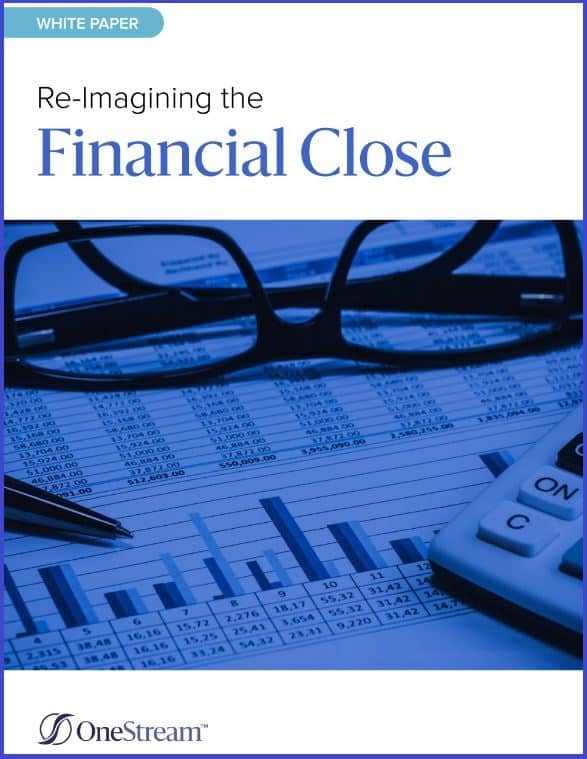The financial close process has long been a critical activity for all companies to accurately record and report on their past performance. Not only is this essential for the organisation to understand what has happened, but there are also legal requirements to perform and publish this analysis.
For this reason and more, the financial close is viewed by many CFOs and Finance leaders as the backbone of effective Finance Transformation.
However, change has and will continue to come at organisations from all angles. We have of course seen unprecedented recent impacts from the global COVID-19 pandemic, and there may unfortunately be other similar events in the future. And as we learned from recent events, Finance and Accounting teams must have the tools to conquer complexity, lead at speed and drive performance.
For Finance and Accounting teams who are still relying on manual processes or ‘connected’ corporate performance management (CPM) software, the financial close and reporting processes – such as statutory, risk, or environmental, social & governance (ESG) processes – add another enormous scope of complexity. Why? Because each and every financial close solution or departmental and corporate application must be connected. And that adds risk, cost and complexity to already-taxed Finance teams.
If your organisation is evaluating whether you’re ready for Finance Transformation, here are 5 key signs it’s time to reimagine your financial close processes.
1. Time Wasted
If your financial close and consolidation process is largely manual, especially if you’re using Excel, it’s time for Finance Transformation. Why? Well, to start, your organisation is probably spending considerable time moving data and reference data between CPM processes and/or exerting a lot of effort to achieve the end result. That means your valuable resources are spending more time on data gathering than understanding the results and (too) little time on analysing the data to make better informed decisions. And that’s damaging to not only your people but also your organisation. The manual process is slowing down the process, wasting time (that can be better spent elsewhere!) and making the job harder than necessary for your teams.

Need more proof? Consider the net impact to organisations generally. A 2019 Ventana Research Finance Benchmark survey found that 48% of organisations take longer than 6 days to close the books. That length of time is far too long in today’s world, and it has consequences. It’s painful to an organisation from the missed opportunities that come with reporting later than necessary. But it’s also painful for the Finance teams who must handle complex manual tasks over a number of days.
2. Lack of Extensibility
If you have multiple processes within the same applications to handle different areas of your business (e.g., management vs. statutory reporting or different levels of budgeting and planning by business units), then you’re using the previous generation of CPM tools. Why? Well, if core components cannot be re-used, then you’re using legacy CPM technology. For instance, if a calculation must be replicated in multiple processes or an account cannot be shared or be visible across multiple hierarchies, then legacy CPM technology is holding your organisation back. It’s no longer necessary to deploy multiple solutions where divisions, business units and departments have a requirement to plan and report at a lower level of detail vs. corporate.
How can this make a difference? Well, having multiple solutions for actuals, budgets, forecasts, plans, reconciliations, profitability analysis and more potentially means multiple different technologies and many different types of integrations to manage. Not only will this be taking more time but there is significantly increased risk in the integrations, validations and reconciliations between multiple products, applications and modules. A modern unified and extensible CPM platform brings this together into one – streamlining processes whilst lowering both cost and risk.
3. Low User Acceptance
If your users are frustrated with the current tools and the level of service and resolution from the vendor support, then it’s a strong sign that change is needed. That’s especially true if you have lost staff because of such issues. Why? Well, if your users aren’t happy with the interface, capability or service of the tools they’re using, then it can (and usually does!) breed unhappiness in their teams or departments. Modern interfaces are everywhere today – from the mobile phones we use to the televisions or even the fridges in our homes. People expect the same simplicity and ease of use in business applications. As a result of frustration when that’s not the case, some users are less engaged in their work, and many will even consider changing roles and/or companies for this reason.
How can user acceptance of the system really help your organisation? Most Finance resources are qualified and ambitious. They wish to be strategic business partners and to use their expertise for the good of the organisation. Accordingly, the right system can be a pleasure to work with, especially when it uses efficient processes that minimize manual tasks, such as performing allocations, calculating depreciation or posting manual journal entries. Minimizing such tasks will give users the time and scope to make a difference – enabling users to help elevate the performance of your organisation as a whole.

4. Missing Functionality
If you’re missing some key capabilities, it’s a good indication change is needed. The functionality around the periphery of the close process especially tends to be a good indicator of whether change is required. Why? Well, if any data commentary and supporting information are stored in Excel files, notes, manual folders or even post-it notes, it raises major functionality concerns. If there’s limited access to real-time information and the only way to get data points is to wait until after the close, you’re employing a high-risk strategy which could cause your organisation major trouble further down the line. Beyond the risk, such functionality (specifically the lack of it) makes it difficult for users to keep track of the process effectively. There are also multiple potential points of failure, and valuable information could be lost. Worse still, the wrong version could be used, resulting in errors in reporting.
How can functionality be improved to avoid those pitfalls? Here’s how: by eliminating spreadsheets, point solutions and other manual data stores across multiple business units. The result? Standardisation across the organisation and, importantly, a single version of the truth for financial and operating results. This functionality in turn supports increased insights and improved decision-making. Your corporate staff also gains the ability to drill through from summarised corporate data right down into the underlying operational details – all in one system.
5. Quality Concerns
If there are concerns, even small ones, around the quality of the data/process and/or there are known errors in reporting, it’s time for a change. Frequent disagreements over data are also a sign to take action. Why? Well, constant errors in the key data or KPIs when presented at the board level are obviously problematic. It’s also not ideal if there are regular restatements required due to errors found after the close. Both types of errors can cause unnecessary stress to everyone involved. Plus, in today’s corporate reporting environment, having good financial data quality isn’t an option – it’s a requirement. Errors or omissions in financial statements can result in compliance issues or penalties, loss of confidence from stakeholders and often a reduction in market value.

How can you avoid those issues and instead ensure you have high-quality data and processes? By fully integrating your CPM solution with all sources systems. Then data quality risk can be managed using fully auditable system integration maps. Validations can be used to control submissions from remote sites. This all provides your organisation with the ability to reduce internal control risk with better audit trails, better drill-down and drill-back to data sources, and a better (and complete) process and change visibility. Ultimately, fully integrating the CPM solution with all source systems will not only reduce the costs of compliance, internal controls and audit requirements, but also improve confidence in the quality of financial results for internal and external stakeholders.
Conclusion
If your organisation is struggling with the need to manage your critical, enterprise-wide financial close as effectively as possible, now is the time to reimagine the financial close.

If your organisation doesn’t have timely, insightful and easily accessible information for insightful reporting and analysis to maintain a competitive edge – now is the time to reimagine the financial close. And if your Finance and Accounting teams are held back from unleashing the true potential of Finance across the organisation, now is the time to begin your Finance Transformation journey.
That journey starts with you setting a new foundation for change and performance management.
Learn More
To learn more about how organisations are reimagining the financial close, click here to read the whitepaper. And if you’re ready to take the leap from spreadsheets or legacy CPM solutions and start your Finance Transformation, let’s chat!
Get Started With a Personal Demo



